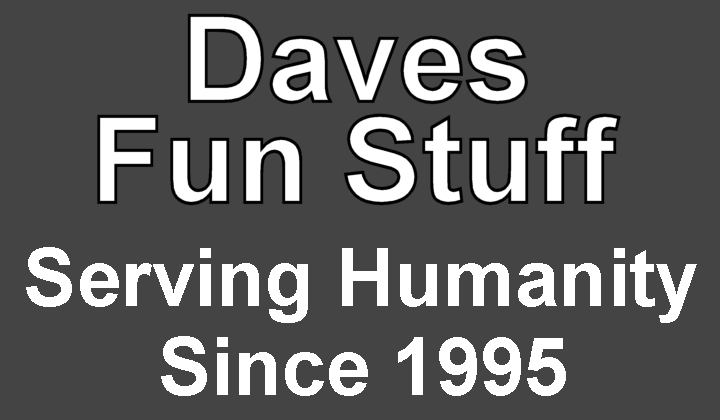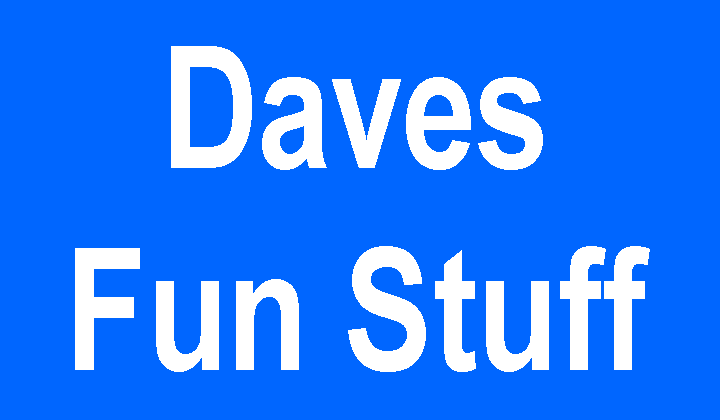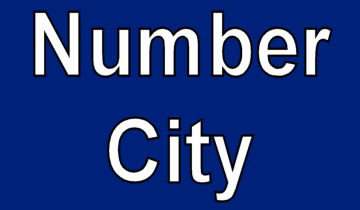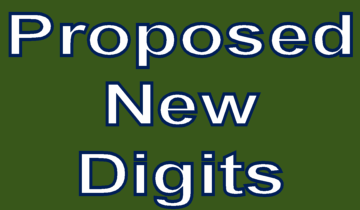 Home
DFS
SB
OD
SDN
DFSM
THP
$5
Home
DFS
SB
OD
SDN
DFSM
THP
$5
| Decimal | Code | Glyph | Decimal or Hex | HTML | Description |
|---|---|---|---|---|---|
| 10 | U+x218A | ↊ | N.A. | dek (a 180-degree-rotated digit 2) or CANADIAN SYLLABICS CARRIER JU (ᘔ) | |
| 11 | U+x218B | ↋ | N.A. | elv (a 180-degree-rotated digit 3) or LATIN CAPITAL LETTER OPEN E (Ɛ) |
Upon further review, the "dek" character ![]() would be easier to draw as a digit than a curved "X" made of two halves of the letter "O" as
seen in an episode of Multiplication Rock in 1973.
would be easier to draw as a digit than a curved "X" made of two halves of the letter "O" as
seen in an episode of Multiplication Rock in 1973.
The "elv" (formerly named "el") character ![]() looks like the letter E that has its lower half resembling the letter "L".
looks like the letter E that has its lower half resembling the letter "L".
This solves the Base 12 (Duodecimal) system missing digits, but we need to agree on new digits for the Base 16 (Hexadecimal), Base 20 (Vigesimal) and Base 24 (Tetravigesimal). I'm stopping at Base 24 because the gylphs would be harder to design that looks unique.
Currently, to add six digits for Base 16, you use the capital letters A for decimal 10, B for decimal 11, C for decimal 12, D for decimal 13, E for decimal 14 and F for decimal 15. For Bases 20 and 24, there is no agreement whether to use the letters "I" (which looks like a one) and "O" (which looks like a zero) or not, so I'll just end the letters at Hexadecimal as it's for computer coders as a compact way to represent four bits in one glyph.
For years, the decimal system has been adequate for many general purposes, but in the times where touch-tone telephones and remote controls are the standard and digital modeming is the rage, phone numbers and area codes are being gobbled up at an alarming rate, simply because there are not enough digits to make up the different number combinations that comprise a seven-digit number for a given area code. Therefore, the solution is to simply add new digits and inplement them into dial-up modems and other dial-in devices that can easily accomodate the new digits. These new digits will not be used in regular telephones since the 10-digit layout is the standard.
Here are the glyphs for the decimal numerals 10 to 23 for use in bases up to 24. This is a 2020 revision.
| zero | one | ||
| two | three | ||
| four | five | ||
| six | seven | ||
| eight | nine | ||
| dek | elv | ||
| doh | tred | ||
| quad | quid | ||
| hed | sept | ||
| oct | nov | ||
| dees | jack | ||
| queen | king | ||
| ten |
Personally, we should go to a Base 24 system instead of Base 12 if we're going to change number bases. My trans decimals for decimals 10 through 23 are easier to remember since they follow a familiar pattern with playing cards. Dek is an upsidedown and reversed Two, Elv is a reversed Three. Doh is a backwards Six which is 12 when doubled. Tred is an upsidedown and reversed Five and is decimal 13. Quad is a reversed Four and is decimal 14. Quid is a reversed Nine. If you just took the digits zero through nine and these six trans digital numbers from Dek to Quid, you could use them in Hexadecimal base systems instead of the letters A-F.
If you line up the digits
![]() ,
,
![]() ,
,
![]() and
and
![]() ,
you can see that each of the consecutive digits are spaced three digits apart from each other.
,
you can see that each of the consecutive digits are spaced three digits apart from each other.
Hed is sort of like a small letter "h" with the top curving around the top and corresponds to decimal 16. Hed was chosen instead of Hept because it's easier to pronounce. Sept is a curved version of a capital letter "Y" and corresponds to decimal 17. Oct is a backwards "R" and corresponds to decimal 18. Nov is a curved "S" tited sideways and reversed and corresponds to decimal 19. You can use these digits zero through nov in a vigesimal base system.
For Base 24, I repurposed the curved "X" from decimal 10, because some consortium agreed on making decimal "10" another glyph called "dek," and called it digit "dees" for decimal 20. Why "dees?" I couldn't call it "dec" so I made a variation of the word that is more like a tenth spot on the extended portion of the decimal position. Decimals 21, 22 and 23 are called Jack, Queen and King with the letters "J", "Q" and "K" to round out the Base 24 system.
With base 24, you have 2, 3, 4, 6, 8 and 12 as factors other than 1 and itself. With base 12, you have 2, 3, 4 and 6 as factors other than 1 and itself. With base 10, you have 2 and 5 as factors other than 1 and itself. With base 6, you have 2 and 3 as factors other than 1 and itself.
Also note that these extended digits would work great in all other applications other than using them as counting numbers. Use them as remote control numbers, phone dial numbers, bullet points, time measurements, or whatever. As for calculations, this is beyond the scope of this page.
One pair for 10 and 11 was represented by
![]() and
and
![]() .
.
The Bell Company added two dial buttons to its telephones: "*" and "#" for use as special codes.
The children's learning series "Multiplication Rock" came up with these two digits
from its lesson for number 12 "Little Twelve Toes" which are the curved version of
![]() for Dek and a backwards number three as
for Dek and a backwards number three as
![]() for El.
Furthermore, it gives "10" as Doh.
for El.
Furthermore, it gives "10" as Doh.
Some other variations are
![]() and
and
![]() ,
the capital letters "X" and "E", the capital letters "T" and "E", and for Hex coders: capital letters "A" and "B" for binary numbers 1010 and 1011.
,
the capital letters "X" and "E", the capital letters "T" and "E", and for Hex coders: capital letters "A" and "B" for binary numbers 1010 and 1011.
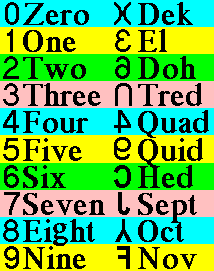
| Decimal | Code(s) | Glyph | Decimal or Hex | HTML | Description |
|---|---|---|---|---|---|
| 10 | U+x218A | ↊ | N.A. | dek (a 180-degree-rotated digit 2) | |
| 11 | U+x218B | ↋ | N.A. | elv (a 180-degree-rotated digit 3) | |
| 12 | N.A. | doh (tba) | |||
| 13 | N.A. | tred (tba) | |||
| 14 | N.A. | quad (tba) | |||
| 15 | N.A. | quid (tba) | |||
| 16 | N.A. | hed (tba) | |||
| 17 | N.A. | sept (tba) | |||
| 18 | N.A. | oct (tba) | |||
| 19 | N.A. | nov (tba) |
6 4 9
© 1995-2025. davesfunstuff.com. All Rights Reserved. Reproduction of any part of this website without expressed written consent is prohibited.
